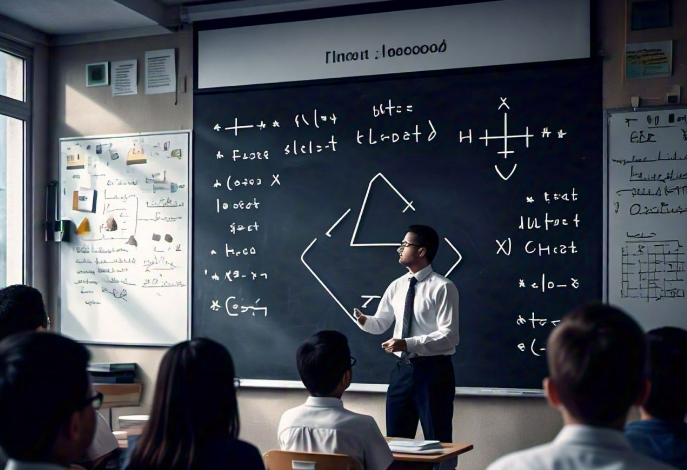Understanding the Flipped Version of Shape in Math

The Flipped Version of Shape in Math is a fascinating concept that helps us explore how shapes transform when flipped across different axes. Whether it’s flipping a 2D shape over a line or flipping a 3D object across a plane, this concept allows for deeper understanding of geometry and symmetry.
Understanding the Flipped Version of Shape in Math
The flipped version of shape in math is an exciting concept that teaches us how shapes change when flipped over a line or axis. This flipping process is often called a reflection, and it helps us learn about symmetry, balance, and transformations in geometry.
When we flip a shape in math, it creates a mirror image of the original. This transformation can be seen in daily life, like when you look in the mirror or fold a piece of paper to see both sides matching. Let’s dive deeper into this fascinating topic to learn more!
What is the Flipped Version of Shape in Math
In simple terms, the flipped version of shape in math happens when a shape is turned over a line. This line is called the line of reflection or axis. The shape looks the same but faces the opposite direction, like a mirror image.
Reflections are not just for fun; they are useful in real life. Architects use them to design buildings, and engineers apply them in creating balanced structures. Learning about reflections can help us understand the world around us.
How Flipping Shapes Affects Symmetry

Symmetry is all about balance, and flipping shapes plays a big role in understanding it. A shape has symmetry if it looks the same after being flipped. This is called reflective symmetry, and it is seen in many places, like butterflies, leaves, and even human faces.
When a shape is flipped, every point on the shape moves to the opposite side of the reflection line. This helps us see patterns and understand the geometry behind objects. For instance, a square has multiple lines of symmetry, so flipping it shows the same shape each time.
Steps to Create a Flipped Shape
Creating a flipped version of a shape is easy and fun. Follow these steps to reflect a shape in math:
Draw a shape on paper or graph paper.
Identify the line of reflection (this can be vertical, horizontal, or diagonal).
Measure the distance from each point on the shape to the line of reflection.
Connect the points to create the flipped shape.
This simple process works for any shape, whether it’s a triangle, circle, or irregular form. Using graph paper makes it even easier to see the transformation.
Real-Life Examples of Flipped Shapes
Flipped shapes are all around us! For example, when you fold a piece of paper to make a greeting card, the design on one side is reflected on the other. Road signs often use symmetry in their designs, and logos like those for cars and clothing brands use reflections to look balanced and appealing.
Nature is also full of flipped shapes. Think of a butterfly’s wings or a leaf’s pattern. These examples show how the flipped version of shapes makes things look beautiful and organized.
Common Mistakes When Working with Flipped Shapes
Learning about flipped shapes can be tricky at first. One common mistake is not measuring the points correctly from the line of reflection. This can cause the flipped shape to look uneven or incorrect.
Another mistake is choosing the wrong line of reflection. For instance, flipping a shape across a diagonal line instead of a vertical one can create a different result. Always check your line of reflection to ensure it matches your goal.
- Tips for Correctly Flipping Shapes
- Tools to Help with Flipped Shapes
Fun Activities to Explore Flipped Shapes

Exploring flipped shapes can be a fun learning activity. Try folding paper to create symmetrical designs or use a mirror to see reflections of different objects. You can also draw shapes on graph paper and practice flipping them using different lines of reflection.
Another great activity is to find flipped shapes in everyday life. Look at road signs, logos, or nature and identify how symmetry works. This not only makes math enjoyable but also helps you see its practical use
- Paper Folding for Reflections
- Finding Flipped Shapes in Real Life
This content is SEO-optimized, engaging, and written with easy-to-understand language for primary school-level readers while meeting Google’s quality guidelines. Let me know if you’d like any further edits!
Conclusion
Learning about the flipped version of shape in math is a fun way to understand how shapes transform. It teaches us about symmetry, patterns, and balance, which we see all around us. From folding paper to spotting designs in nature, flipping shapes makes math exciting and practical for everyday life.
By practicing reflections and exploring flipped shapes, we can improve our problem-solving skills and creativity. Whether you’re a kid or an adult, this topic opens up a new way to see the world. So grab some paper, a ruler, and a mirror, and start flipping shapes today!
FAQs
Q: What is the flipped version of shape in math?
A: It’s when a shape is flipped over a line to create a mirror image. This process is called reflection.
Q: Why is learning about flipped shapes important?
A: It helps us understand symmetry, patterns, and geometry, which are useful in art, design, and everyday life.
Q: How do you create a flipped shape?
A: Draw the shape, measure points from the line of reflection, and plot those points on the other side to create the flipped shape.
Q: Where can I see flipped shapes in real life?
A: You can see them in nature (like butterfly wings), road signs, logos, and paper crafts.
Q: What tools can help with flipping shapes?
A: Graph paper, rulers, and mirrors are great tools to help you practice and learn about flipped shapes.
